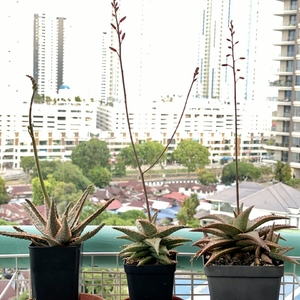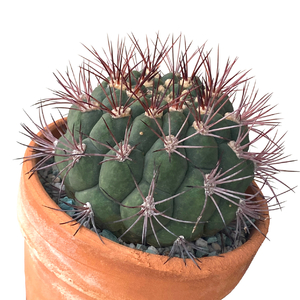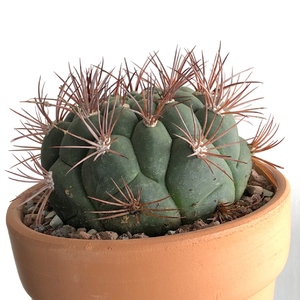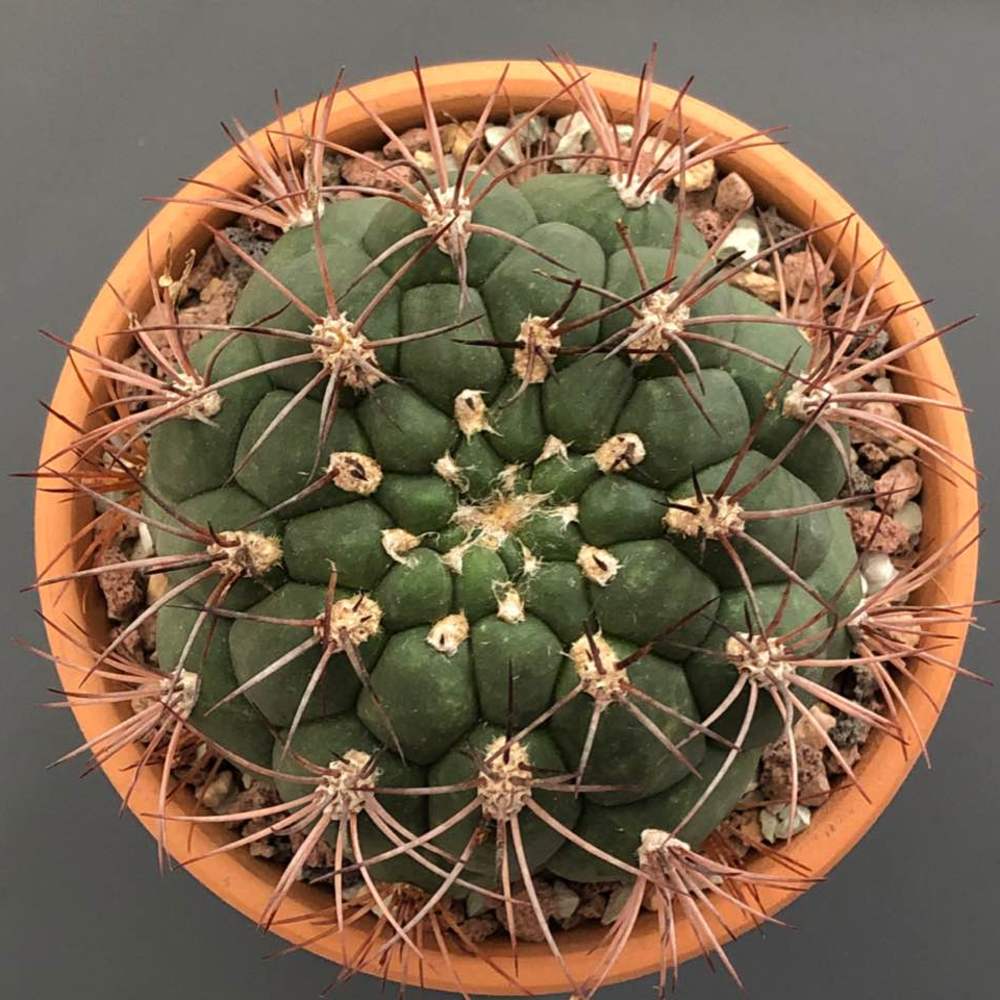植物经验
详细说明
Gymnocalycium saglionis is a globular, slow-growing cactus up to 3 feet (90 cm) tall. The body is almost cylindrical, more or less flattened, up to 16 inches (40 cm) in diameter and can range from dull-green to blue-green. The spines are yellowish-brown, reddish or white becoming grey with time and up to 1.6 inches (4 cm) long. The flowers are white or reddish, often more than one simultaneously and up to 1.4 inches (3.5 cm) long. The fruits are globular, reddish or dark pink, with tiny, shiny black brown seeds.
Growing Conditions
Light: Some Gymnocalyciums are shade-seeking in the wild, among shrubs or grasses, while others grow completely exposed. Some will therefore need a light shading from the sun in the hottest months, but to overdo this will result in loss of flowers.
Soil: The balance of the potting medium should be sufficient to allow good drainage, so that the plants do not sit in soggy soil for more than a day or two after watering.
Water: Watering in the summer months, while the plants are growing well can be frequent (weekly for small plants in small pots), but always allowing the compost nearly to dry out before rewatering. Watering in the winter months at all is unwise, and certainly not necessary. The difficult times are spring and autumn.
Propagation
Those species which produce offsets can be readily propagated by cuttings. Gymnocalycium seed germinates well when fresh, and will keep for a few years if stored in cold conditions.
Pests and Diseases
As much as any other cacti, Gymnocalyciums suffer from the persistent pest, mealybug, in both its forms. Gymnocalyciums, like other cacti will suffer from fungal disorders if overwatered, but often only the root system will collapse, leaving you the job of cutting out any rot in the base of the plant, and dusting with a fungicide powder before rerooting.
Growing Conditions
Light: Some Gymnocalyciums are shade-seeking in the wild, among shrubs or grasses, while others grow completely exposed. Some will therefore need a light shading from the sun in the hottest months, but to overdo this will result in loss of flowers.
Soil: The balance of the potting medium should be sufficient to allow good drainage, so that the plants do not sit in soggy soil for more than a day or two after watering.
Water: Watering in the summer months, while the plants are growing well can be frequent (weekly for small plants in small pots), but always allowing the compost nearly to dry out before rewatering. Watering in the winter months at all is unwise, and certainly not necessary. The difficult times are spring and autumn.
Propagation
Those species which produce offsets can be readily propagated by cuttings. Gymnocalycium seed germinates well when fresh, and will keep for a few years if stored in cold conditions.
Pests and Diseases
As much as any other cacti, Gymnocalyciums suffer from the persistent pest, mealybug, in both its forms. Gymnocalyciums, like other cacti will suffer from fungal disorders if overwatered, but often only the root system will collapse, leaving you the job of cutting out any rot in the base of the plant, and dusting with a fungicide powder before rerooting.
花相册 (4)




kensong
2020年04月18日

Slow growing.


kensong
2018年10月04日

This is my first growing diary. From C&O









